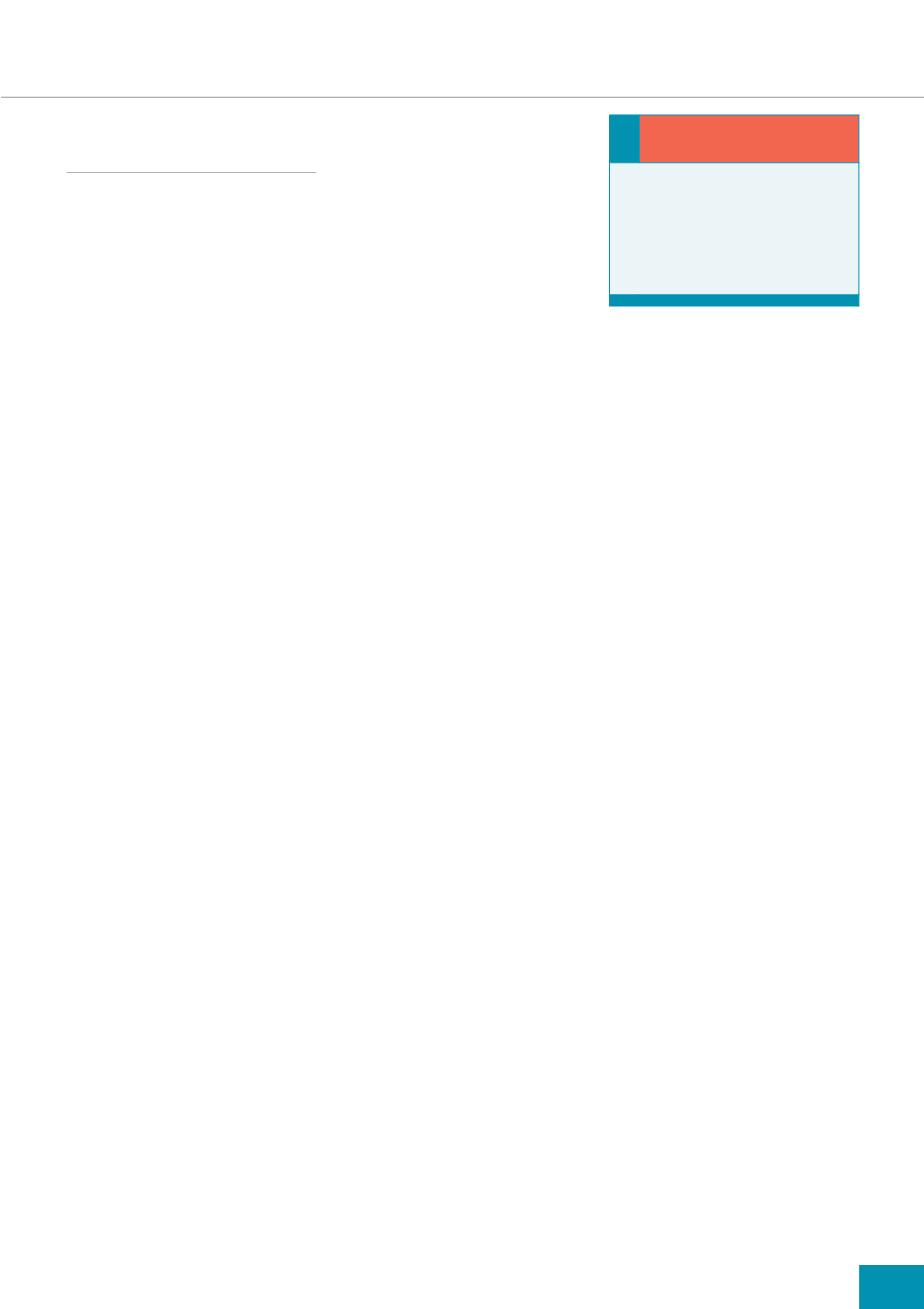
SKIN CARE TODAY
2015,Vol 1, No 1
53
FOCUS ON VENOUS ECZEMA
i
who are immunocompromised, with
diabetes mellitus and/or peripheral
vascular disease. In such cases, self-
examination of the feet, toes and
skin should be undertaken daily.
In addition to wearing
compression hosiery, patients can
be encouraged to consider other
lifestyle modifications. Chronic
venous disease symptoms (pain and
oedema) are exacerbated at rest,
and when standing or sitting with
lower legs placed in a dependent
position. This is due to the
gravitational effect which increases
oedema and venous pooling and
reflux. Gentle increase in walking
activities can greatly improve
symptoms, as the calf muscle pump
efficiency is enhanced. Legs should
be raised during restful periods
during the day and evening. Raising
the foot of the bed will aid venous
return overnight when hosiery
is removed.
Weight loss may also be a
factor to consider and discuss
with patients, as increasing BMI is
associated with increasing severity
of disease (Brown and Rossi, 2013;
Morton and Phillips, 2013). Referral
to a dietician may be warranted to
support the overall management
strategy.
Managing the condition:
topical therapies for
venous eczema
Good skin examination is essential
to guide decision-making regarding
the most appropriate topical
treatments. As a general rule of
thumb, the medical management
of eczema depends on the clinical
presentation:
i
Acute wet eczema requires
drying agents
MEDICAL AND NURSING
INTERVENTIONS FOR
VENOUS ECZEMA
Managing the underlying
condition — venous
insufficiency
Elastic compression hosiery (and
bandaging) has a place in the
management of venous eczema
to address underlying venous
insufficiency (British Association
of Dermatologists [BAD], 2014).
It is important to exclude the
possibility of arterial disease before
application of any compression
hosiery or bandaging. Pedal
pulse and ankle brachial pressure
index (ABPI) assessments are
strongly advised using physical
palpation and Doppler ultrasound
(NICE, 2012b). NICE Clinical
Knowledge Summaries (CKS)
recommendations include the
following in relation to venous
eczema (NICE, 2012b):
i
Compression stockings are
useful for CVI, post-thrombotic
syndrome, varicose veins, venous
eczema, lipodermatosclerosis
and venous ulcers
i
Primary care prescribing follow
the British standard for class
of compression
i
Class 1–2 elastic compression
hosiery (below-knee) are
suitable for venous eczema
i
Class 2 for lipodermatosclerosis,
atrophie blanche and healed
leg ulcers
i
Class 3 compression
hosiery may be required for
lipdermatosclerosis if no
improvement with class
2 hosiery
i
If ankle-brachial pressure index
(ABPI) is greater than 0.8,
compression stockings are
safe to wear.
Graduated compression
bandaging is a useful technique
for patients who have developed
ulcers and/or those who are unable
to don compression hosiery.
Generally, for patients presenting
with venous eczema, classes 1–2
(British classification) compression
hosiery is suitable and available
on prescription. Below-knee
compression hosiery supports
i
Practice point
0
anagement of venous eczema
requires early intervention
addressing the underlying venous
condition, skin manifestations
of venous eczema and any
associated complications.
venous return within the lower leg
through graduated external pressure
on the skin (NICE, 2012b).
Graduated pressure hosiery
positively influences venous return
by exerting higher pressure over
the ankle region, compared to that
exerted over the calf region of the
leg. This external pressure reduces
blood pooling and reflux in the
veins and capillaries, encourages
one–way flow of blood, as well as
reducing foot and ankle oedema.
Gradually, with regular use,
compression hosiery can reduce
the symptoms of chronic venous
disease and, thus, venous eczema
as the integrity of dermal capillaries
and veins improve.
Fitting elasticated
compression hosiery
It is advisable to measure
the patient’s ankle and calf
circumferences to ensure
a correctly fitting garment,
following specific manufacturer’s
guidelines. Education and support
is also required to ensure patient
understanding and skill in donning
and removing hosiery each day.
Patient concordance in wearing
hosiery is variable. Some patients
feel symptomatic relief, others
experience difficulties (unsightly
cosmetically, difficult to apply,
uncomfortable to wear), so
consistent support and advice is
required. Aids and tips to enhance
concordance include:
i
Include the patient in decision-
making regarding hosiery, i.e.
choice of colour, texture, open
or closed toe
i
Agree shorter wearing times
(wear when walking, standing
and sitting with legs dependent)
i
Remove hosiery every day,
usually before bedtime.
Don hosiery first thing in
the morning
i
Use tips/aids for application —
rubber gloves, talc, plastic bin
liner, application gadgets.
Poorly-fitting hosiery can lead to
further skin injury, skin abrasions
and skin necrosis. Particular
vigilance should be undertaken
with high risk patients, i.e. those


